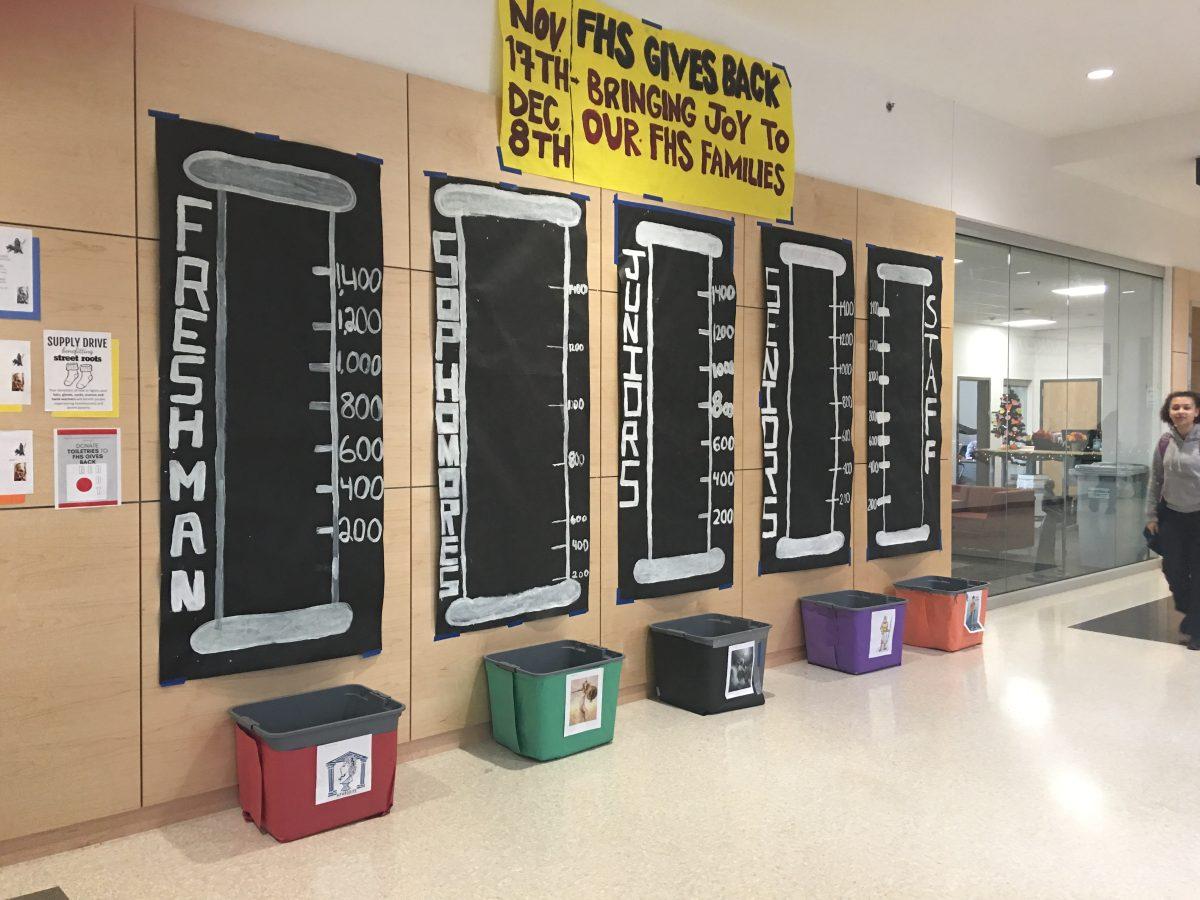
During the holiday season, when most families are with loved ones to savor festive meals and exchange gifts, others may be unable to provide the meals and gifts they would like. However, FHS Gives Back is a short term solution. “We are lucky to have this new building,” says ASB advisor, Marc Appell. But the reality of Franklin is that “a large population of our student body doesn’t always have the basic necessities.” By donating toiletries, non-perishables, clothing and money, Franklin offers relief to those families who may not be able to provide for their loved ones during the holiday season. FHS Gives back is in a constant search to provide to as many families as possible during the two-week period the fundraiser is held. “We are currently at 8 families this year. There is still a lot of need, and there are applications still coming through, so it might be even more than that,” says Appell. Some of these families are quite large; they have ranged anywhere from five to nine people in a family. “Realistically we are hoping to help forty or fifty people,” continues Appell.
Since its beginning, FHS Gives Back has strived to bring awareness to members of the community in need. “This is a good time of year for us to honor those students and see what we can do to help them out—to be Franklin STRONG for our own people,” elaborates Appell.
It is important to recognize the fact that there are students who are struggling day to day, and FHS Gives Back is one way of assisting these kids in getting what they need. “This is a really sad time for families who don’t have the money or resources to have a holiday dinner,” says Fiona Jahoda (10), a member of ASB. Appell adds, “whether it’s through a large meal or a few extra ones, I believe small actions like these are worth it.”
FHS Gives Back also attempts to bring awareness to larger issues at hand. More than one million public school students in the United States have no room to call their own, no desks to do their homework, and no bed to rely on at night. State data collection required by federal law and gathered by the National Center for Homeless Education shows the number of homeless students has doubled in the past decade, reaching 1.3 million. Many of those students may be doubled up with relatives or moving from place to place. They may be housed with their whole families, or going it alone.
The study relied on interviews with 44 currently homeless youth and a survey of 158 more who were homeless at some point in middle or high school. Ninety-four percent report living with different people such as relatives or friends. 44 percent stayed in a hotel, and would spend some nights in a car, park, abandoned building, or a public place like a bus station. According to the PPS district website, proof of residency is required for registration. Enrollment does not require further proof, therefore it does not capture instability in student living environments.
A second issue in recognizing these students is stigma. Two-thirds of the students in the study said they were uncomfortable telling people at school about their situation. “These are kids that hide their pain,” says Jahoda. “These kids are nice people who wear a smile on their face, so we don’t see anything wrong.” FHS Gives Back challenges this stigma. “We hope the long term effect of FHS Gives Back is these people know that we’re still thinking about them, and they’re not forgotten,” says Appell.

































